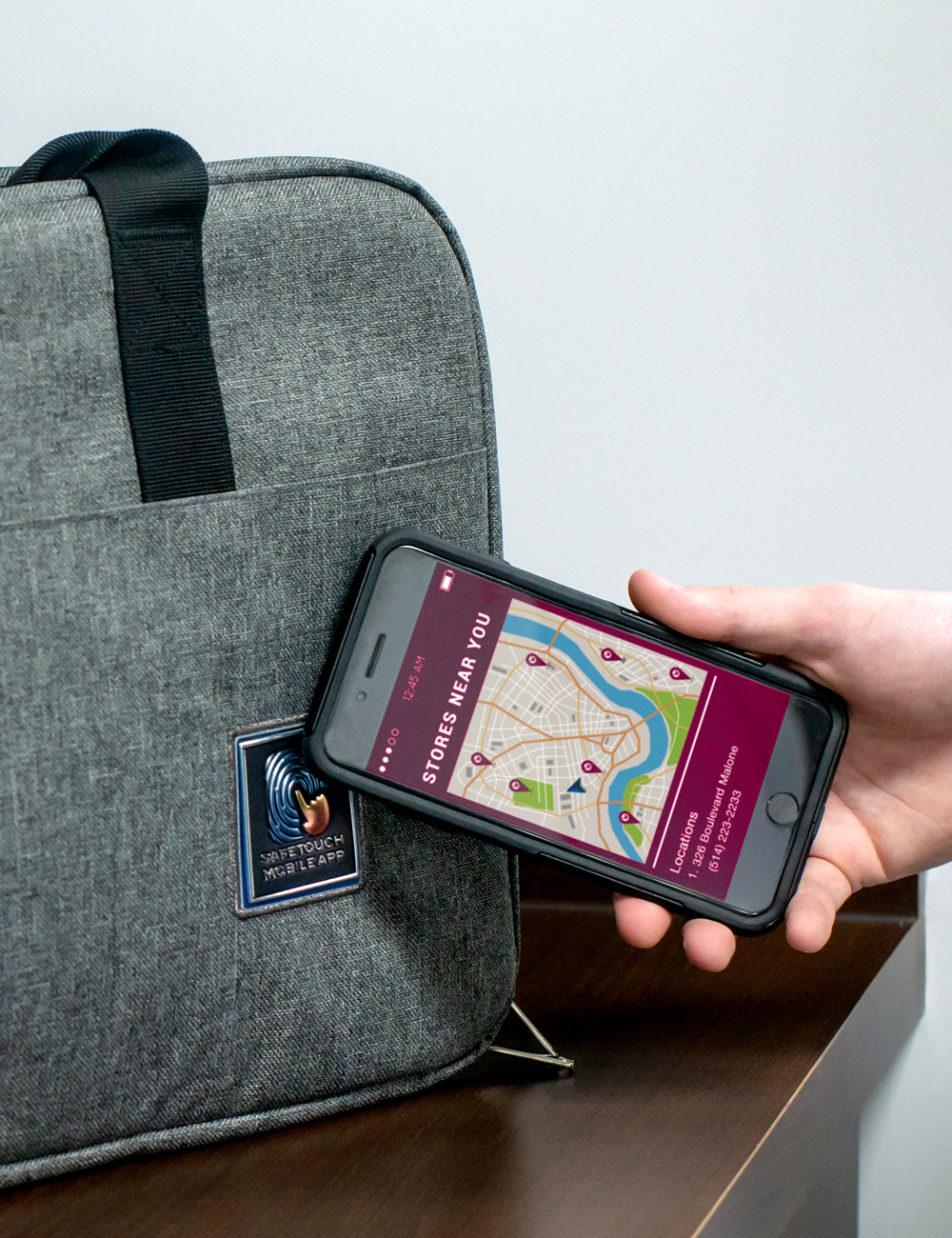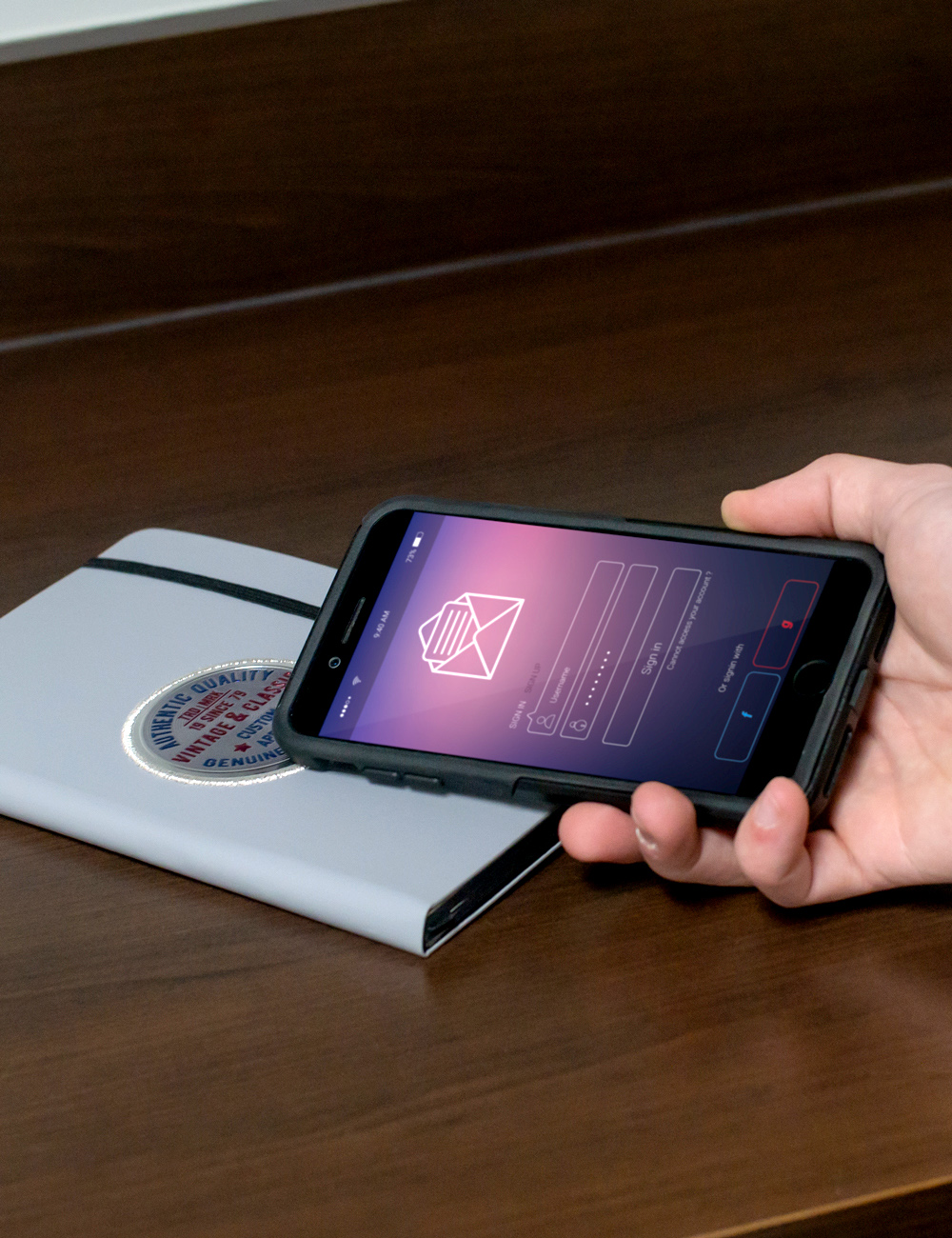What is NFC?
NFC (Near-Field Communication) is a form of wireless data transfer that allows a user to access information by simply tapping an NFC enabled device over our product. Pictures, Video, audio files, Geo location and many more options become instantly available through a link enabled on the NFC product. NO TYPING AND NO WIRES… Convenience has never been easier to access your promo content.
Pros/What It Means For Companies + Consumers
NFC TECHNOLOGY

Flexibility and convenience
lexibility and convenience at the touch of a button. NFC technology covers use in a vast range of management and services. From booking reservations to making direct payments, this hassle-free method makes dealings easier than ever.
Modern Technology
Your name is reflected in your establishment. With modern technology on the rise, products and devices are always an exciting experience. Clients view enterprises who adopt newer technology as innovate and progressive, leading to a higher likening of the brand. NFC allows companies to better serve customers by presenting a method that takes the fuss and fumbling out of daily transactions.

Frequently Asked Questions (FAQ)
Frequently Asked Questions about Near Field Communication and NFC Tags
NCF stands for Near Field Communication. It is a contactless protocol to trasfer files. NFC Tags are microchips with an antenna, which can contain information and be read easily and quickly by an NFC-enabled mobile phone or tablet.
Near field communication uses electromagnetic radio fields to allow two compatible devices to exchange data and share information when passed close to each other. Typically the devices must be within four to five centimeters of each other to work. This is in contrast to far field communication which operates across great distances.
Data is transmitted between two NFC compatible devices and/or tags when they come in close proximity to each another. The different NFC interactions include:
PASSIVE TO ACTIVE (or vice-versa)
A passive NFC tag such as an NFC sticker is touched to an active NFC device such as an NFC-enabled phone. The NFC Branding Solution offered by Spector and Co. is this type of interaction.
ACTIVE TO ACTIVE
An active NFC device such as an NFC-enabled phone is touched to another active NFC device.
The term NFC tag is commonly used for a passive NFC item. Examples of passive NFC tags are NFC inlays, NFC stickers, NFC wristbands, etc. There is no battery inside of NFC tags. They simply have an integrated circuit (IC) and an antenna. Data is transferred via this antenna which will be powered up when an NFC enabled device comes in close proximity to read the NFC data.
Unlike QR Codes, you do not have to download an app to use NFC1. All you have to do is make sure that the NFC feature is turned on in your mobile phone. This option is usually found in the phone settings. If NFC is turned on in your NFC phone, NFC will be on in the background (just like the Bluetooth or Wi-Fi feature). That means if you touch your NFC phone to an NFC tag, the data transfer will occur without you having to do any extra steps.
The user experience is different for each device and many devices will request your permission before opening the data from the NFC tag.
1iPhone 7 iPhone 7 Plus, iPhone 8, iPhone 8 Plus, iPhone X require an external app to be able to read the data on an NFC tag. NFC functionality is not available on older iPhone models.
NFC is restricted to a very small reading range, hence the name Near Field Communication. The two NFC devices and/or tags will need to be within 15 millimeters of each other in order to successfully exchange data.
- Size and shape of the NFC tag – In general, the larger the tag the better the reading range. This is because larger NFC tags will have a larger antenna.
- The environment the NFC tag is placed in – Environmental hazards such as metal or aluminum will decrease or inhibit the NFC tag’s performance.
- The NFC tag form factor – The more material that is in between the NFC tag’s antennae and the NFC reader, the lower the NFC tag’s performance. For example, if the smartphone has a thick case, it will need to be held much closer (basically touching) to the NFC tag to be able to read the data.
The NFC tags can currently be embedded in an indented dome as well as under any patched branding solutions (brandpatch, 4cp brandpatch, debossed brandpatch & brandshield). Please note the minimum dome or patch size required to be able to embed an NFC tag: 1.5”x1.5”
Look for the NFC icon on our product page to see if the NFC option is available.




